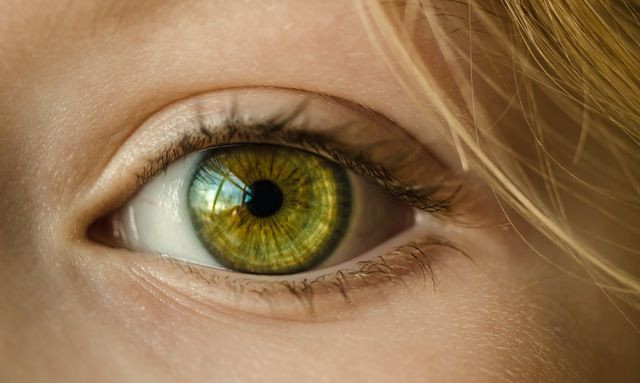Maintaining Good Eye Health: What Causes Cataracts And 3 Ways To Prevent Cloudy Vision

We take many of our body's daily functions for granted, like using our legs to move, our voice to talk, or our eyes to see. Sight helps us navigate the world around us; our eyes communicate with our brain about the size, shape, color, and texture of things. As we age, we are more vulnerable to diseases that impair our vision, like cataracts, but they're treatable, and most importantly, preventable.
In Brit Lab's latest video, "What Are Cataracts?" host Greg Foot explains cataracts appear in the lens of the eyes, the clear, crystalline structure that sits just behind the pupil. The cataract causes the lens to become less transparent, giving us misty or blurred vision. The lenses are made of a precise structure of water and proteins, which start to clump together as we get older. This blocks some light from entering the eye, and also reduces the sharpness of the images we see.
Read More: Cataracts Melt Away Thanks To New Eye Drops Containing Steroid Lanosterol
As they develop, cataracts can also affect the color that we see, giving our vision a slight brownish tint. However, the mechanism that makes proteins clump together is still not fully understand. Clumping of proteins can occur after eye surgery, or an injury as a consequence of certain diseases associated with diabetes, or after exposure to radiation. Others will have a genetic predisposition to developing cataracts, so they develop them while they're young.
Spotting a cataract doesn't always mean surgery is necessary. However, as they grow, they can cause more symptoms, like dim, blurred, yellow, or double vision. This makes it hard to read, work on a computer, or see in general.
The surgery usually takes under an hour, and most people feel very little pain. The doctor will numb the eye with anesthetic, and may give medicine to relax the patient. A tiny cut will be made in front of the eye, and then the doctor will insert a small tool to break up the cataract, and gently suction it out. The new lens implant, made of plastic, silicone or acrylic will be inserted, and the incision will be closed. A few stitches may be sewn.
People feel better after cataract surgery, but may still be required to wear glasses or contacts.
Read More: Cataract Surgeries Of The Past
Prevention can help eliminate the risk of cataracts.
Boost Vitamin C Intake
Orange juice delivers high amounts of vitamin C, which is linked to a lower risk of cataracts. A study published in the Journal of Nutrition found that high levels of vitamin C reduced the risk of cataracts by 64 percent. Meanwhile, moderately high levels of blood lycopene — a naturally occurring chemical that gives fruits and vegetables a red color — was associated with a 46 percent increased risk of cataracts.
Limit Carb Intake
Lowering the risk of cataracts can be done by limiting intake of carbohydrates. A study published in Investigative Ophthalmology & Visual Science found that people who ate a lot of carbohydrates had three times the risk of cataracts than those who ate the fewest.
Drink Tea
Green or black tea can save our eyesight. A study in Journal of Agricultural and Food Chemistry found green and black tea may inhibit the development of diabetes-related cataracts. Over a three-month period, diabetic rats drank a human equivalent of 4.6 eight-ounce cups of tea per day.
See Also:
These Gifs Let You See Through The Eyes Of The Visually Impaired
Published by Medicaldaily.com



























